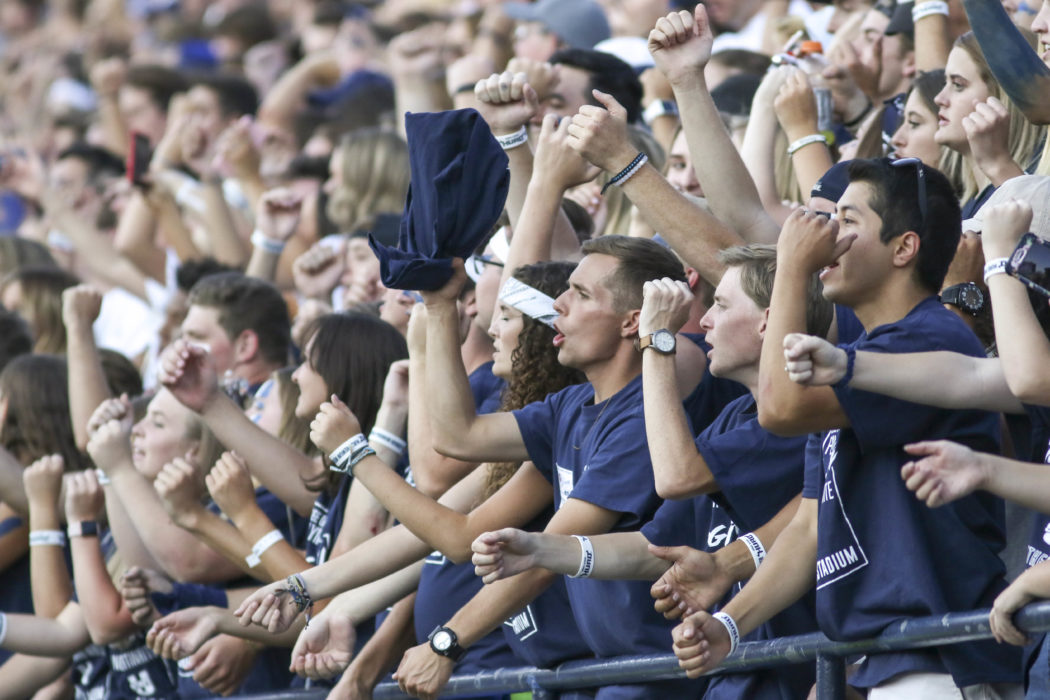Celebrating the ‘Spirit of the Scotsman’ 100 years later
Homecoming week is a chance for Utah State University students to celebrate and remember the rich traditions of heritage that are associated with college and what it means to be an “Aggie from Utah.”
This year, students celebrate the 100th year of the “Spirit of the Scotsman” giving recognition to the rise of the song written by alumnus Ebenezer Kirkham from the class of 1918.
As a student at USU, professor emeritus Larry Smith led a 17-member dance band called the Scotsmen that played for most of the student dances and served as the pep band for the basketball games in the Fieldhouse.
Smith led the band from 1957-59 as a student and in 1965 as a faculty member. In the 1980s, Smith wrote a new arrangement of the Scotsman for the USU band to play. This is the version USU fans now hear at the games.
Dr. Lane Weaver, director for the Aggie Marching Band, was first introduced to the Scotsman as a freshman student in the Aggie Marching Band in 1993.
Most of the football games at that time were finished by the time students came back to campus after summer break. There wasn’t much crowd involvement or interaction, but the Scotsman was still known as the school song.
As a trombone player, Weaver played the drone that is heard at the beginning of the Scotsman(where people now start waving their arms back and forth).
“Trombone players are always trying to keep themselves entertained and there’s kind of a personality that comes out,” Weaver said. “We started to move our horns back and forth and that was it. We kind of just started doing it.”
Eventually the students caught on and began asking the band to play the Scotsman at basketball games in the Spectrum. From there the Scotsman fight song was born.

“Nobody knew the words to the fight song or the Scotsman in 1993, so that’s been kind of a neat thing to see embraced that is now a part of the culture of the university,” Weaver said.
Scott Olson, chair of this year’s USU’s homecoming Committee, said the theme for this year’s homecoming came as a suggestion from USUSA students, who then presented the idea to the homecoming committee.
The committee immediately loved it and began planning activities to represent the “Spirit of the Scotsman.”
Olson hopes students will participate in homecoming activities to support their clubs and groups on campus, as well as the entire university.
“When alumni and visitors come to campus this weekend for homecoming activities, I want them to see a campus filled with school spirit and pride,” he said.
He said he wishes homecoming will bring students new friends and new experiences.
“I hope students see homecoming as one of our great traditions that has continued for decades and will continue on for decades to come,” he said.
Every time the beginning notes of the Scotsman are played, Olsen said he thinks “of all the things that make USU great — the great students, alumni, faculty and staff.”
Tony Ahlstrom serves on the traditions committee. He was first exposed to the Scotsman at a USU vs. BYU basketball game held in Salt Lake in November of 2016 just before he was about to start school at Utah State.
He watched in awe as alumni all over the stadium were united in the Scotsman cheer. Ahlstrom couldn’t help but smile and realized it was something he needed to be a part of.
Almost two years later, Ahlstrom watched the USU vs. BYU football game from his apartment complex with friends, singing the Scotsman after every touchdown.
“That is the external declaration of me being an Aggie, and even if no one else can hear, I scream at the top of my lungs to let the world know that I love Utah State,” Ahlstrom said. “I love what we stand for, I love the family that we have here and I am honored and proud to be a part of it.”
Weaver said there is much to be said about the importance of what the Scotsman symbolizes.
“I think what makes it so important is that it’s unique,” Weaver said. “That uniqueness makes it special. You don’t do that Scotsman unless you’re an Aggie. You don’t do it unless Utah State means something to you.”
—kortni.marie.wells@aggiemail.usu.edu
@kortniwells

